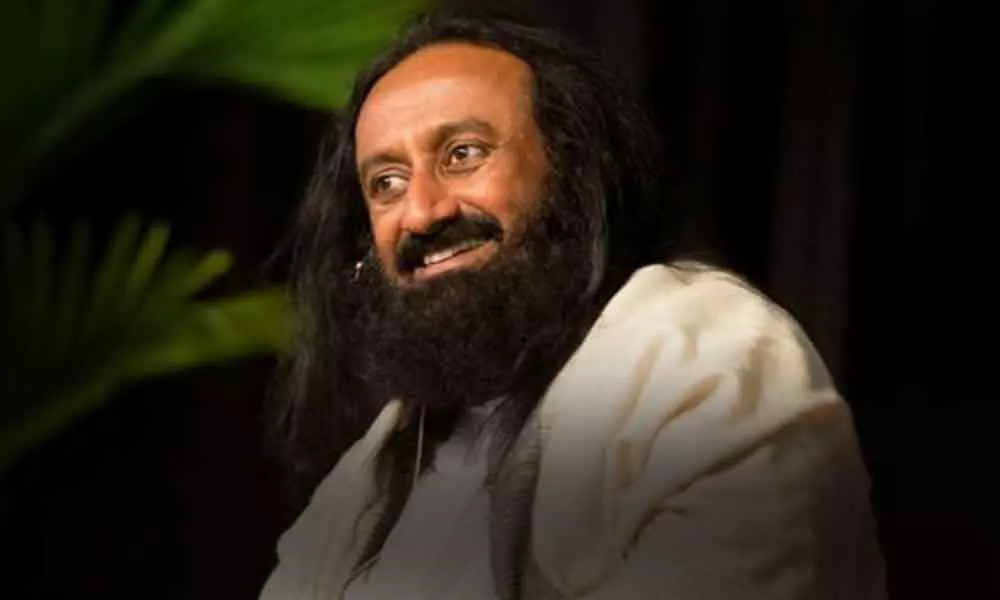Navratri is celebration of prana

The word 'Navratri' literary means nine nights in Sanskrit. ‘Nava’ has two meanings; one is ‘nine’ and the other is ‘new’.
The word 'Navratri' literary means nine nights in Sanskrit. 'Nava' has two meanings; one is 'nine' and the other is 'new'. "Ratri" means night - which gives solace and rest and brings rejuvenation. It gives relief at three levels of our existence - physical, subtle and causal. This is a period for self-referral and transformation; getting back to the source. During this time nature sheds the old and life rejuvenates and emerges back afresh in the spirit.
Like a baby is in the mother's womb for nine months before it is born, similarly, during these nine days and nights, the seeker through fasting, prayer, silence and meditation gets back to its true source; which is love, joy and peace. While fasting detoxifies the body, silence purifies the speech and brings rest to the chattering mind. Meditation takes one deep into one's own being.
During these nine nights of Navratri, our mind should be in divine consciousness. We should ask self these questions, "How was I born? What is my source?" Then we become creative and victorious. When negative forces haunt us, we are disturbed and we grumble. Craving, aversion, uncertainty and fear are the negative forces. To get relief from all this, we need to go to the source of energy within us.
During these nine nights and ten days, nine forms of Devi Shakti i.e. female divinity is worshipped. On the first three days of Navratri we honour Durga, the embodiment of valour and self-confidence. The next three days are committed to Lakshmi, the embodiment of wealth and the last three days are dedicated to Saraswati, the embodiment of knowledge.
There are many stories on how the divine mother manifested herself to restore peace and order by slaying the asuras (demons) - Madhu and Kaitabha, Mahishasura and Shumbha and Nishumbha and many other demons. These demons are symbolic of the negative forces that can take over anyone at anytime. Madhu is craving and Kaitaba means aversion.
Raktabijasur means deeply ingrained negativities and obsessions. Mahishasur means dullness. It is symbolic of heaviness and inertia. The Divine Shakti brings energy, and inertia is lifted. Doubt of the self is 'Shumbh'. Nishumbh is doubt of everything. Navratri is the celebration of the spirit or prana which alone can destroy these asuras.
Though our life is governed by the three gunas, we seldom recognize and reflect on them. During the first three days of Navratri, our consciousness sails through tamo guna (it leads to depression, fear and emotional instability), the next three days through rajo guna (this leads to anxiety and feverishness) and then blossoms in the sattva guna of the last three days (it gives us clarity and focus and we become peaceful and dynamic). These three primordial gunas are considered as the feminine forces of our magnificent universe.
By worshipping the Mother Divine during Navratri, we harmonise the three gunas and elevate sattva in the atmosphere. Whenever sattva dominates in life, victory follows. On the tenth day we celebrate Vijayadashami – the day of victory. This is the day of culmination in the awakening of our divine consciousness. It means, simply feel blessed and more honoured for everything that we have received.
Many yagnas are conducted during these nine auspicious days. Although we may not necessarily understand the meaning of all the yagnas and ceremonies which are performed, we should simply sit with our hearts and minds open and feel the vibrations it creates.
The chantings with all the rituals and customs bring about purification and upliftment of the consciousness. The entire creation becomes alive and we recognize life in everything just as children see life in everything. The Mother Divine or the pure consciousness itself pervades all the forms. Recognizing the one divinity in every form and every name is the celebration of Navratri














